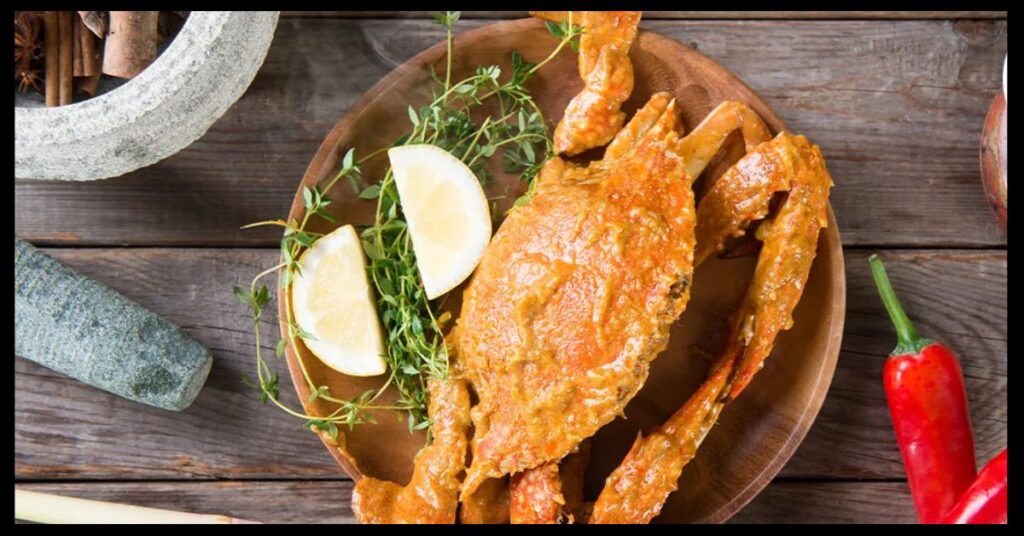Snow crab is a popular seafood delicacy known for its sweet, tender meat and delicate flavor. It is widely enjoyed in many parts of the world and can be prepared using various cooking methods such as boiling, steaming, grilling, or baking. This guide provides an easy and delicious snow crab recipe that is ideal for family dinners, special occasions, or seafood lovers looking for a nutritious and satisfying meal.
Table of Contents
ToggleWhat Is Snow Crab?
Snow crab (Chionoecetes opilio) is a species found in the cold waters of the North Atlantic and North Pacific Oceans. Known for their long legs and snow-white meat, these crabs are harvested primarily in Canada, Alaska, and parts of Russia. According to the National Oceanic and Atmospheric Administration (NOAA), snow crab is a sustainable seafood option due to strict fisheries management practices in North America [Source: NOAA Fisheries].
Nutritional Benefits of Snow Crab
Snow crab is not only delicious but also highly nutritious. A 3-ounce serving of snow crab contains approximately:
- Protein: 16 grams
- Calories: 90
- Fat: 1 gram
- Omega-3 fatty acids: 0.3 grams
- Vitamins: B12, B6, niacin
- Minerals: Zinc, selenium, copper
These nutrients contribute to muscle health, heart function, and immune system support, making snow crab an excellent addition to a balanced diet.
Ingredients for the Best Snow Crab Recipe
To prepare a flavorful snow crab meal, gather the following ingredients:
- 2 pounds of snow crab legs (fresh or frozen)
- 1 lemon, cut into wedges
- 4 tablespoons unsalted butter
- 3 cloves garlic, minced
- 1 tablespoon Old Bay seasoning (or your preferred seafood spice mix)
- 1 teaspoon paprika
- Fresh parsley, chopped (optional)
- Salt to taste
- Water (for steaming or boiling)

Preparing the Snow Crab
1. Thawing Frozen Crab Legs
If using frozen snow crab legs, allow them to thaw in the refrigerator overnight or under cold running water for 30 minutes before cooking. Thawing helps preserve the texture and flavor during cooking.
2. Cleaning the Crab Legs
Rinse the crab legs under cold water to remove any residue or ice crystals. Use kitchen shears to gently snip the shells if you prefer easier access to the meat after cooking.

Cooking Methods for Snow Crab
A. Steaming (Recommended for Best Flavor and Texture)
Steps:
- Fill a large pot with 1-2 inches of water and place a steaming rack inside.
- Bring the water to a boil.
- Place the crab legs on the rack and cover the pot with a lid.
- Steam for 6–8 minutes if thawed, or 10–12 minutes if frozen.
- Remove and serve immediately.
Steaming preserves the delicate flavor and moisture of the snow crab meat.
B. Boiling
Steps:
- Fill a large pot with water and bring it to a boil.
- Add salt, lemon wedges, and 1 tablespoon of Old Bay seasoning.
- Submerge the crab legs and boil for 4–5 minutes (thawed) or 8–10 minutes (frozen).
- Drain and serve hot.
Boiling is a quick and convenient method, especially for large batches.
C. Baking
Steps:
- Preheat oven to 375°F (190°C).
- Arrange crab legs on a baking tray lined with foil.
- Mix melted butter, garlic, paprika, and seasoning, then brush over the crab legs.
- Cover with foil and bake for 12–15 minutes.
- Remove and garnish with parsley before serving.
Baking infuses the crab meat with flavor from the seasoning and butter.
Making Garlic Butter Dipping Sauce
Ingredients:
- 4 tablespoons unsalted butter
- 2 cloves garlic, minced
- 1 teaspoon lemon juice
- A pinch of salt
Instructions:
- Melt butter in a small saucepan over low heat.
- Add garlic and cook for 1–2 minutes until fragrant.
- Stir in lemon juice and salt.
- Serve warm alongside the crab legs.
This dipping sauce enhances the sweetness of the snow crab and complements its natural flavors.
Serving Suggestions
- Side Dishes: Corn on the cob, garlic bread, coleslaw, roasted potatoes, or steamed vegetables.
- Beverages: White wine, light beer, or lemon-infused sparkling water pair well with the mild flavor of snow crab.
- Garnishes: Fresh lemon wedges and chopped parsley add brightness and visual appeal.
Storage and Leftovers
Store any leftover snow crab meat in an airtight container in the refrigerator for up to 2 days. Reheat by steaming or gently warming in a skillet with butter to retain moisture.
Freezing Tip: Cooked crab meat can also be frozen for up to 3 months. Seal in freezer-safe bags with minimal air to prevent freezer burn.
Common Cooking Tips
- Avoid overcooking, as it can make the crab meat tough and dry.
- Always start with pre-cooked crab legs unless buying live crabs, as most snow crab sold in stores is already cooked and flash-frozen.
- Use seafood crackers or kitchen shears for easy access to the meat.
Snow Crab vs. King Crab: What’s the Difference?
| Feature | Snow Crab | King Crab |
|---|---|---|
| Shell | Thin and easy to crack | Thick and spiny |
| Taste | Mild, sweet flavor | Richer, buttery taste |
| Leg Size | Smaller, longer legs | Larger, meatier legs |
| Price | More affordable | Typically more expensive |
Snow crab is a great option for home cooking due to its ease of preparation and affordability.
Conclusion
Snow crab is a versatile seafood that’s simple to prepare and delightful to eat. Whether steamed, boiled, or baked, its naturally sweet flavor pairs well with garlic butter and fresh herbs. This snow crab recipe is suitable for both beginners and experienced cooks looking to enjoy a restaurant-quality meal at home. With minimal ingredients and a straightforward cooking process, snow crab can easily become a favorite part of any seafood dinner.







